Fact Sheet FS1348
Hairy galinsoga (Galinsoga quadriradiata = G. ciliata) is a troublesome weed of vegetable crops in the Northeastern United States that can be difficult to control once established on a farm. Hairy galinsoga spreads throughout a farm by seeds that germinate quickly after exposure to light. Rapid production and germination of these seeds result in several generations in a year. Once hairy galinsoga is present on a farm, the seeds can easily spread by wind and equipment. Left uncontrolled, hairy galinsoga will take over production areas until a hard frost. Awareness of the life cycle and biology of hairy galinsoga are key to figuring out the best options for controlling it in your fields.
Growth Habit
Hairy galinsoga is a broadleaf annual weed with hairy leaves and stems, and opposite-toothed leaves. Mature plants of hairy galinsoga typically produce multiple branched stems and can reach two feet in height. Plants produce small white flowers with a distinctive yellow disk center in clusters at branch ends.
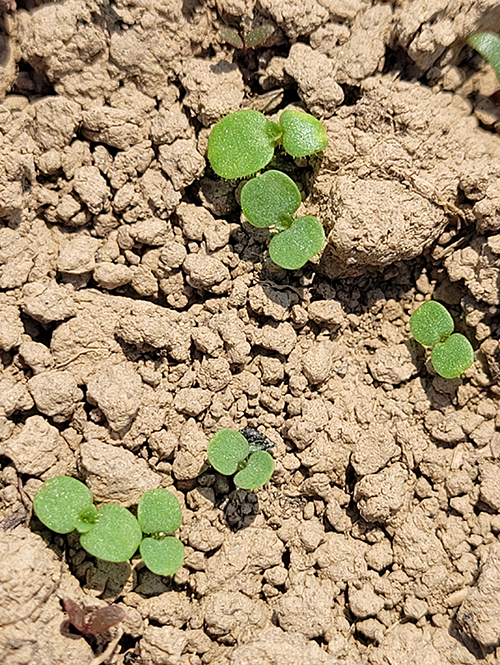
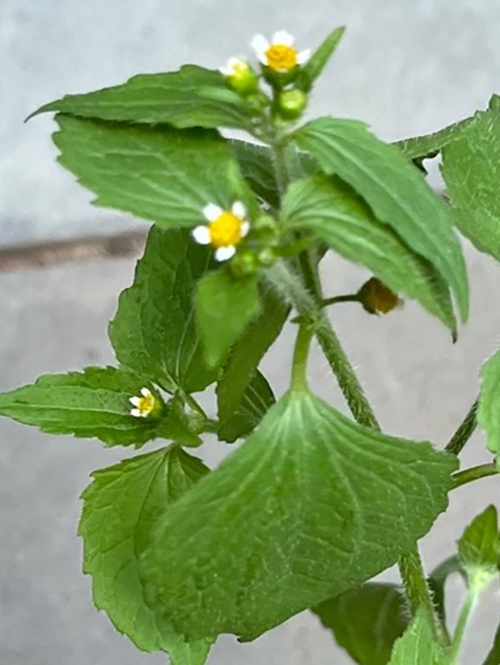
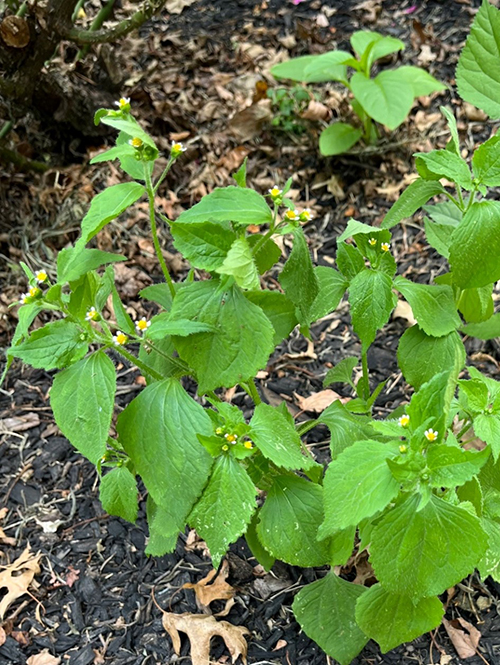
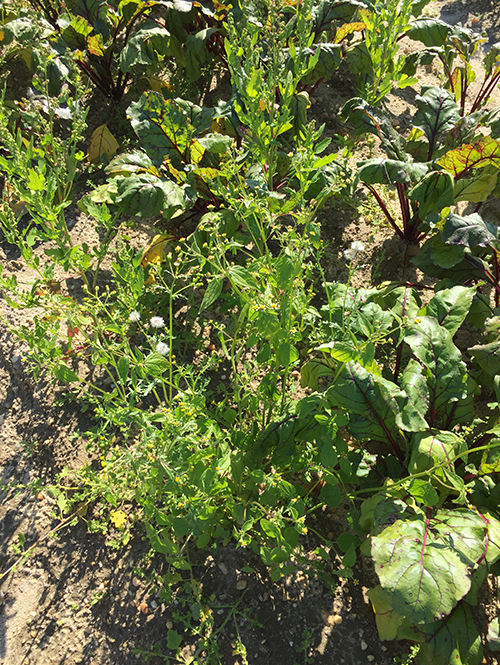
Management Strategies
Control of hairy galinsoga is a multi-year process that involves several strategies for control of seed production. Organic and no-spray farming operations will need to rely on well-timed cultivation and strategic planning to compete with galinsoga populations.
Farm Decision Tool
Hairy galinsoga management is a multi-year process for farms not relying on herbicides. Identification of existing hairy galinsoga populations on the farm along with reflection on previous activities and how they impact these populations, is the first step to developing a management plan. Use the charts below to identify your hairy galinsoga populations, current management methods, and develop a plan of action to eradicate hairy galinsoga from your production areas.
| Hairy Galinsoga Field Locations | ||
|---|---|---|
| Field | Size of Population | Suspected Introduction |
| Example: Field 4 | Patchy throughout | Equipment borrowed |
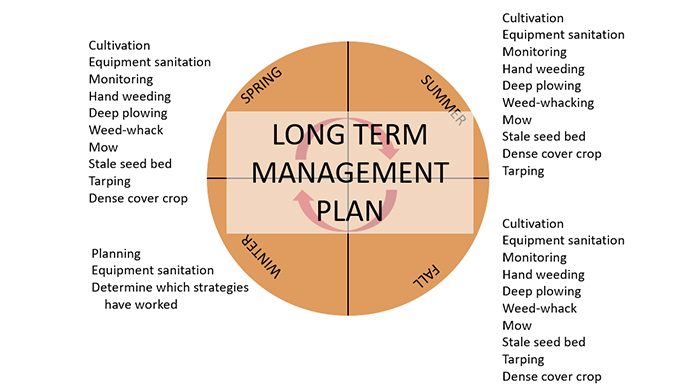
Figure 5. Seasonal decisions to make.
| Field | Current Strategies | Timeframe |
|---|---|---|
| Field 4 | Example: hand weeding | Late summer |
| Field | Potential Future Strategies | Timeframe |
|---|---|---|
| Field 4 | Stale seed bed prior to planting field 4 | Throughout 2022 |
References
- Grubinger, V. (2014). Galinsoga Management. The University of Vermont.
- Grubinger, V. (2004). Flaming Stale Seedbeds for Weed Control.
- Lounsbury, N., Birthisel, S., Lilley, J., Maher, R. (2022). Tarping in the Northeast: A Guide for Small Farms (PDF). University of Maine.
- Mohler, C., Teasdale, J., DeTommaso, A. (2021). Manage Weeds on Your Farm: A Guide to Ecological Strategies. USDA Sustainable Agriculture.
- Mohler, C., Johnson, S. (2009). Crop Rotation on Organic Farms. USDA Sustainable Agriculture Research and Education.
- Uva, R., Neal, J., DiTomasso, J. (1997). Weeds of the Northeast. Cornell University Press.
September 2022
Copyright © 2024 Rutgers, The State University of New Jersey. All rights reserved.
For more information: njaes.rutgers.edu.
Cooperating Agencies: Rutgers, The State University of New Jersey, U.S. Department of Agriculture, and Boards of County Commissioners. Rutgers Cooperative Extension, a unit of the Rutgers New Jersey Agricultural Experiment Station, is an equal opportunity program provider and employer.

